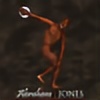HOME | DD
 WillemSvdMerwe — Hilarcotherium castanedaii
WillemSvdMerwe — Hilarcotherium castanedaii

#america #miocene #miyou #south #astrapothere #astrapotherium #hilarcotherium #castanedaii #astrapotheridae
Published: 2020-02-11 20:43:03 +0000 UTC; Views: 3451; Favourites: 149; Downloads: 17
Redirect to original
Description
Another astrapothere! Hilarcotherium castanedaii lived in the Middle Miocene, 15.5-11.8 million years ago, in South America (fossils found in Colombia). South America at the time was an 'island continent', disconnected from North America. As a result, a really distinctive kind of wildlife evolved there, kinds found nowhere else. The astrapotheres in ways mimicked tapirs and elephants, though only very distantly related to them. It reached a bodyweight of over a ton. Another species, Hilarcotherium miyou, was estimated at weighing 6.5 tonnes, which would make it the largest astrapothere and one of the largest South American mammals ever.Related content
Comments: 23

👍: 1 ⏩: 1

👍: 1 ⏩: 0

Good for you! Thanks for commenting!
👍: 0 ⏩: 0

👍: 0 ⏩: 1

Thanks, much appreciated!
👍: 1 ⏩: 0

Thanks and you're a big help with your skeletal reconstructions!
👍: 0 ⏩: 0

I wonder if they were truly hairless or if they had short fur covering their bodies.
👍: 0 ⏩: 1

Might have! At this size anyways if they had short hair it wouldn't have been very obvious ...
👍: 0 ⏩: 0

It would be interesting to see a graphic of the main species of Astrapotheres side-by-side to illustrate their relative size.
👍: 0 ⏩: 2

OK maybe I can do that ... ONLY ... the size estimates I get info for aren't actually very accurate ...
👍: 1 ⏩: 0

It's roughly the same size and dimensions as a modern black rhinoceros.
👍: 0 ⏩: 0

























